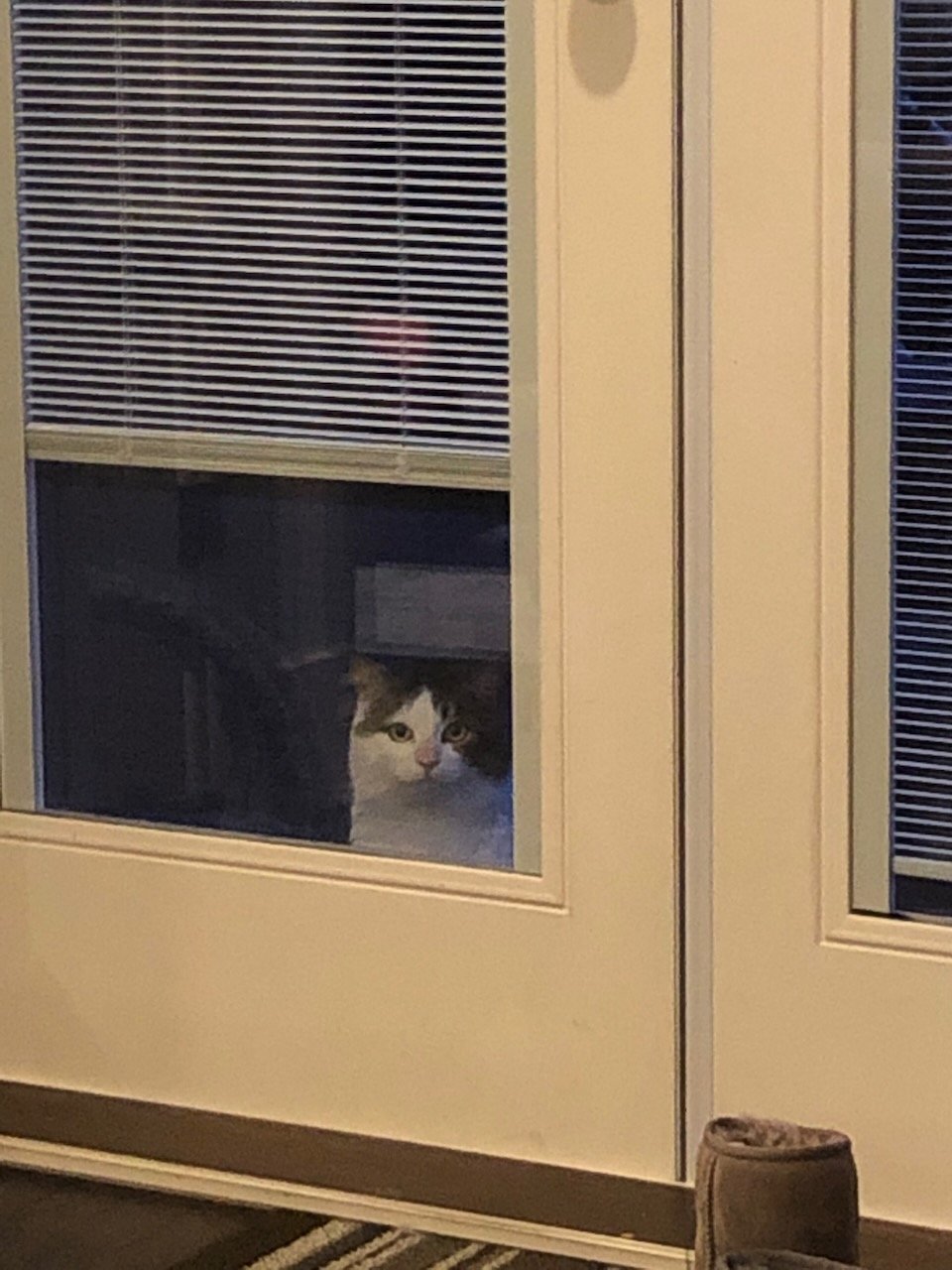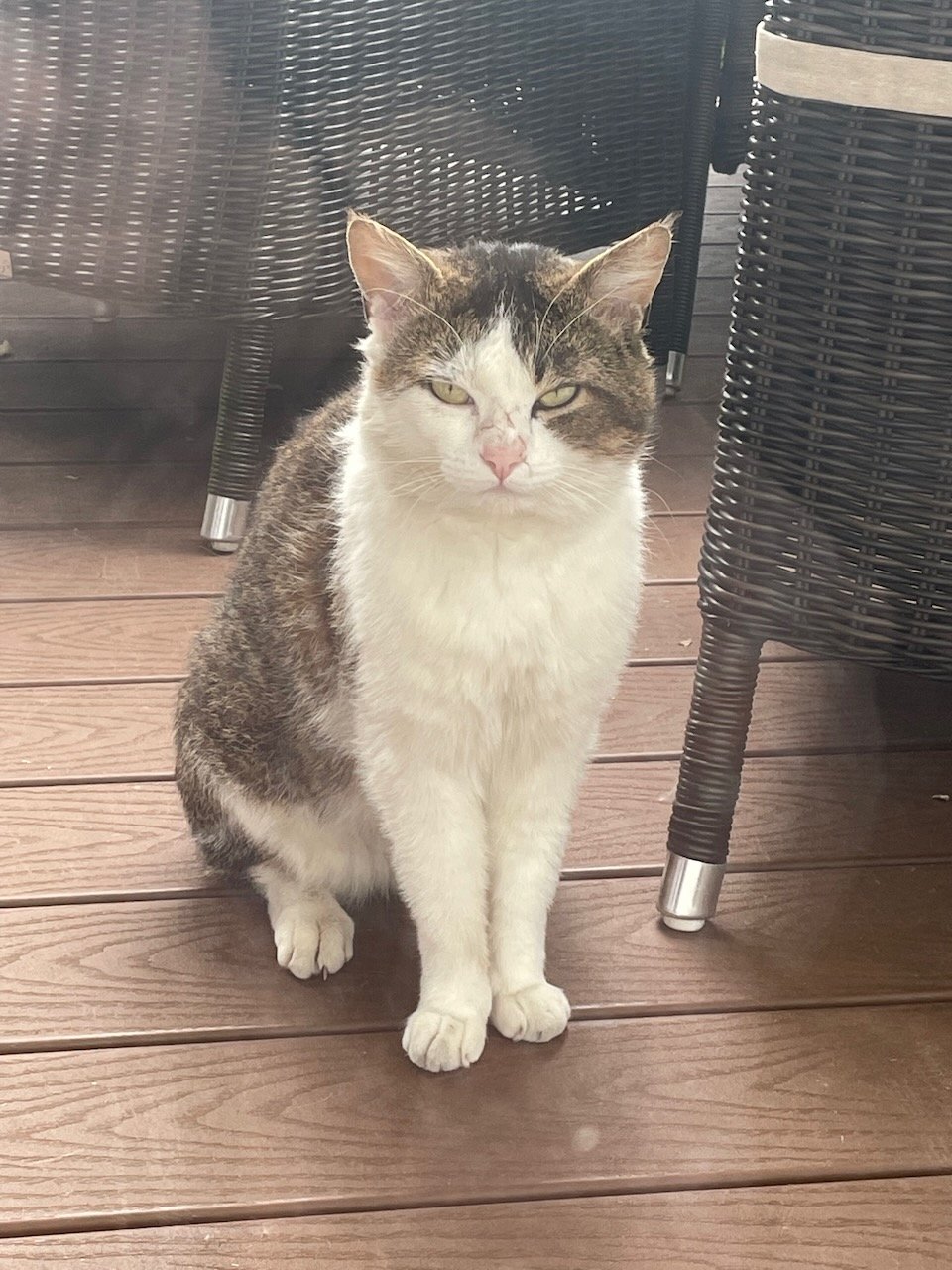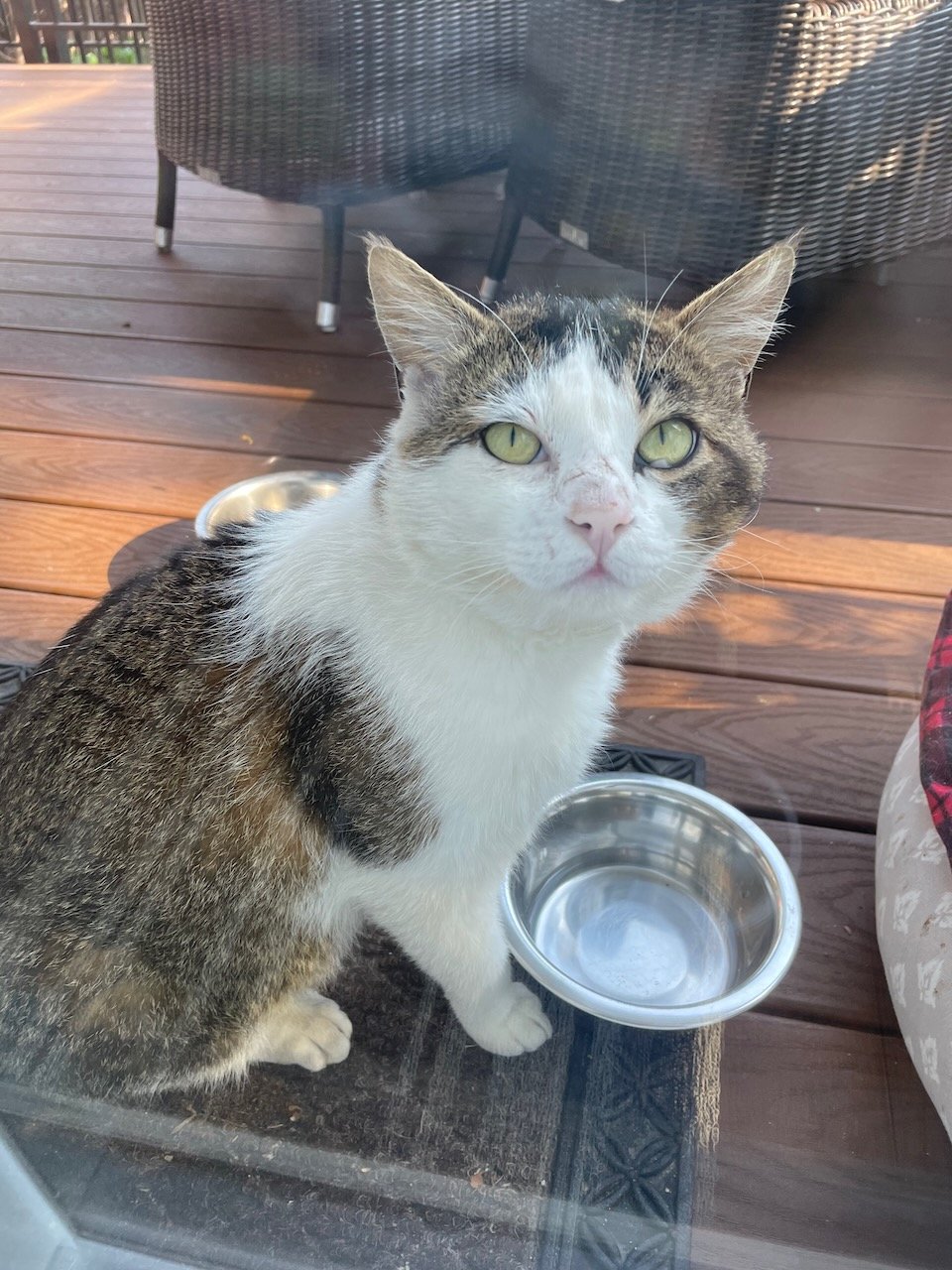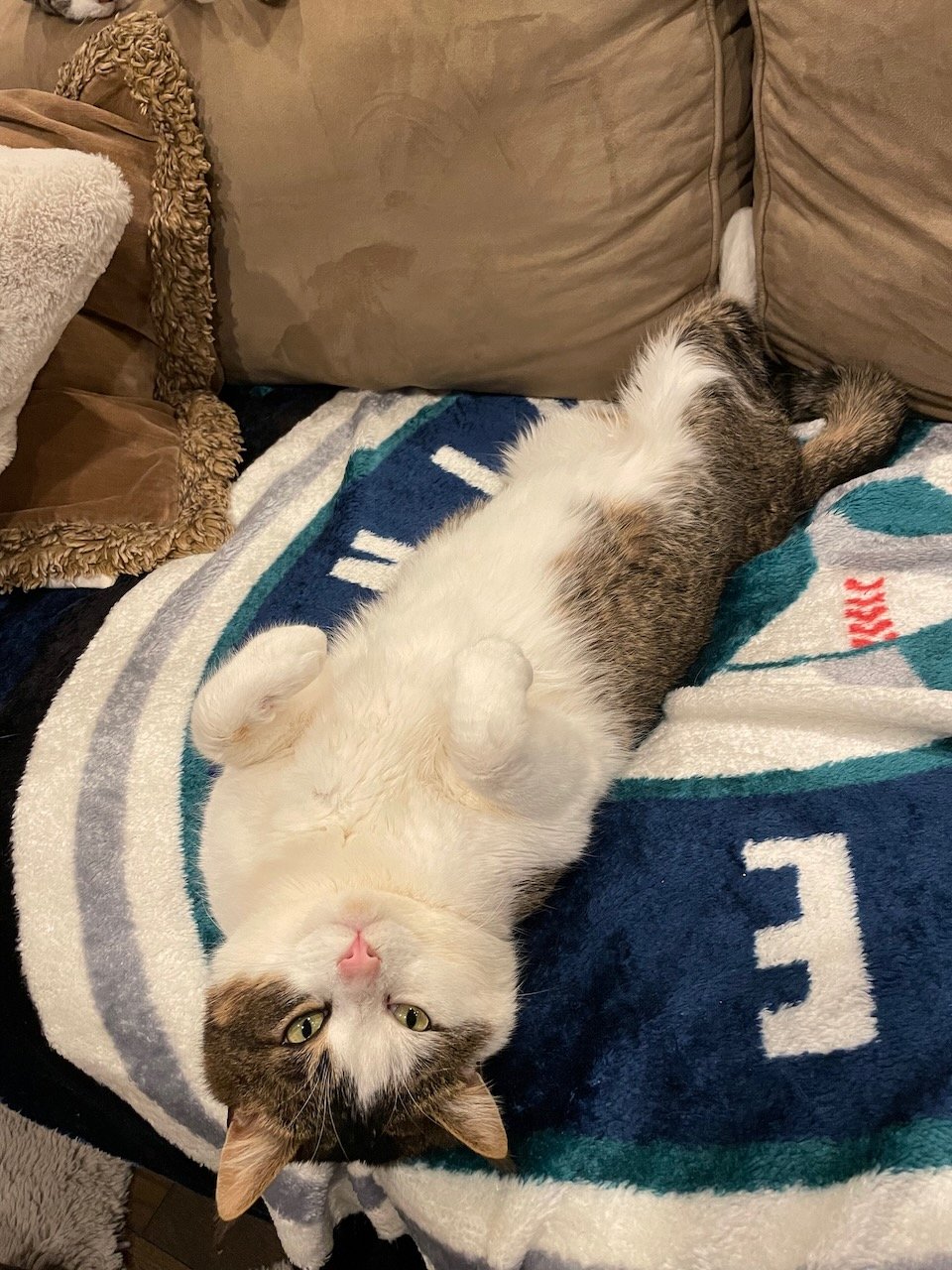Socializing S’more: How a Spicy Cat became a Sweet Kitty
S’more at our Operations Centre
When kitties are brought to VOKRA, they’re not always used to having people around them. Observing a cat's behavior, including body language, can help assess their level of socialization. Understanding their comfort level ensures we act in their best interest. Some cats come in after living on the streets and fending for themselves, sometimes for many years. These kitties may be very shy or scared, and in some cases semi-feral, meaning they’ve had experience with humans in the past but have become wary and untrusting. Socializing these kitties is an important step in getting them used to humans and comfortable so they can be fostered and, ultimately, adopted. It's important the kitty starts to see humans as a source of comfort and love, not just food.
Peeking into Kate’s house
When S’more arrived at VOKRA in late December 2021, he’d been homeless for two years. He was beat up, had fleas and a tick on him, his fur was matted and there was evidence he’d been in scraps, likely with neighbourhood racoons. He was lucky he found a family in his neighbourhood to watch out for him and feed him during that time. They noticed he appeared hungry and it didn’t seem like anyone was looking after him.
“This past winter we knew we needed to call VOKRA to get help trapping him, it was too cold for him to stay outside,” says Kate Shibagaki-Ong, a member of the family who was feeding S’more.
Giving a spicy look
Upon intake at our Operations Centre, S’more showed signs of aggression towards people. He wasn’t used to being in a small space and he was nervous and confused about why he was in our Ops Centre. He would meow, try to escape his cage and hiss and growl at volunteers trying to intimidate them, which sometimes worked.
It was important to socialize him with experienced volunteers so he’d become comfortable enough with people to be placed in foster, with a goal of getting him adopted.
Happy to be fed
Our socialization volunteers started by sitting next to his closed kennel while tossing him treats and talking to him, luring him out of his hiding spot and trying to feed him out of their hands. S’more was a gentle cat when he wanted to be, but when treat time was over he gave volunteers a disappointed look and a growl.
It was essential to allow S’more to call the shots on how close someone could get to him and how long he was comfortable being around a person. Not forcing him out of his comfort zone and watching his body language allowed our volunteers to socialize him without pushing him too far.
The more our volunteers worked with him, tossing him treats and sitting and talking to him, the more S’more started to open up. He’d come out of hiding when people were around and let them feed him and pet him. He growled and hissed less and came out to check out his space. It was noticeable that S’more did better with our female team members than male. He warmed up to the ladies easier. While he’d continue to hide around men, he was gently taking treats from the hands of female volunteers while sitting in their laps. He began to enjoy having his cheeks rubbed and even rolled over to have his stomach pet. The time they were spending with him was paying off!
“Rub my tummy please.”
After a month of working with S’more, it was time for him to go to into foster care and Kate’s family jumped at the chance to see him again. They wanted to help him succeed and become the friendly cat they knew he could be. “He was quite timid when we first brought him home,” says Kate. “I’m not sure if he recognized us, but when he came out of his cage he started asking for pets and belly rubs. He even let us bathe him after having an accident in the carrier! We were quite shocked by this since we expected him to be apprehensive.” (You can watch S’more getting a bath here.)
His foster family is working to expose S’more to more people so he doesn’t get too attached to just one person. Friends and family have helped socialize him by taking turns feeding him, giving him treats and trying to pet him. S’more is still more comfortable around women, but is becoming more trusting of the males around him.
“Did I mention I like tummy rubs?”
There is a noticeable difference in how S’more has come out of his shell by having people spend time with him. Although he can still get scared with sudden movements or overstimulation, S’more has turned into the sweetest, most loving cat who curls up in his foster’s laps, sleeps beside them in bed and follows them around the house.
“It’s been so rewarding, getting to foster and socialize S’more,” says Kate. “Each little win is huge when you’re caring for a cat who needs socialization. I think many people shy away from fostering shyer cats but it’s so rewarding. S’more is so gentle and we love him!”
If you’re interested in fostering and have time to work with kitties on their socialization skills, let us know by applying to foster at vokra.ca/foster. When applying, specify you’re interested in fostering cats who need to work on their socialization skills.
We also often have shy kitties available for adoption who’re looking for adopters willing to put in the extra time to make them feel comfortable. If you’re interested in adopting one of these kitties visit vokra.ca/adopt.







